
 |
Tea Clipper |
 |
| from TeaAntiques.com | ||
| Edition One Hundred and Twenty Three |
An attractive Coalport teapot and stand of oval straight sided shape, beautifully decorated with a red and gilt vine leaf design, c 1800-1805.
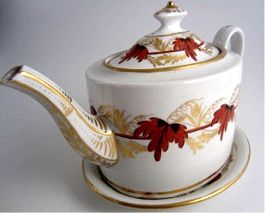
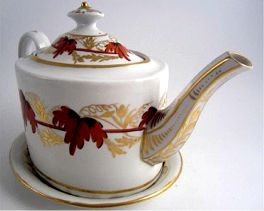
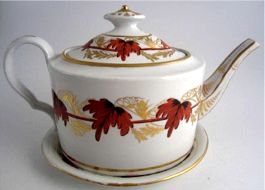
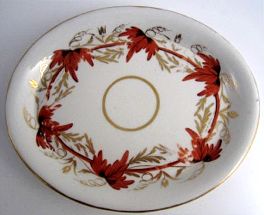
The teapot has its original oval stand, which is lovely to have with it. The teapot is of a pleasing straight sided oval shape and fits comfortably on its stand.
More details of this item and other tea related antiques can be found by visiting my web site at www.TeaAntiques.com.
Mompesson House in Salisbury has to be one of my favourite places. Not too grand, not too small and it has a small peaceful garden in which to sit and admire the plants and trees - as well as the house.
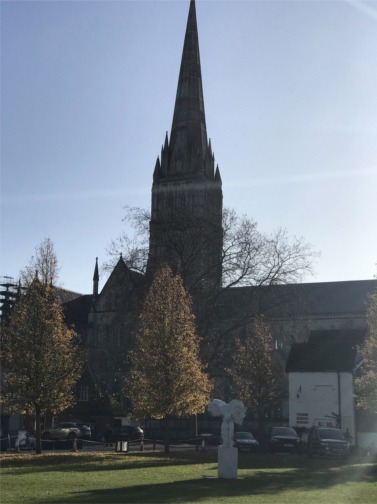 Mompesson House overlooks Salisbury Cathedral, which dates back to the 13th
century and is regarded as being one of the finest examples of Early English
Architecture. It now boasts the tallest church spire at 404 feet (123m),
contains one of the oldest working clocks in the world and has the best
preserved original Magna Carta. Surrounding the Cathedral is the largest
cathedral close in Britain at 80 acres (32ha) - it is in the northern side of the
close that Mompesson House is located.
Mompesson House overlooks Salisbury Cathedral, which dates back to the 13th
century and is regarded as being one of the finest examples of Early English
Architecture. It now boasts the tallest church spire at 404 feet (123m),
contains one of the oldest working clocks in the world and has the best
preserved original Magna Carta. Surrounding the Cathedral is the largest
cathedral close in Britain at 80 acres (32ha) - it is in the northern side of the
close that Mompesson House is located.
The Cathedral Close is a busy affair, with lots of hustle and bustle of tourists. But all that fades away when inside the house as tranquility takes over. The house is an excellent example of the Queen Anne period, it was built for the Member of Parliament, Sir Thomas Mompesson towards the end of the 17th Century. The Townsend family lived in the house from 1846 until 1939,while Miss Barbara Townsend lived there for 96 years. The freehold was purchased in 1952 by Dennis Martineau who gave it to the National Trust.
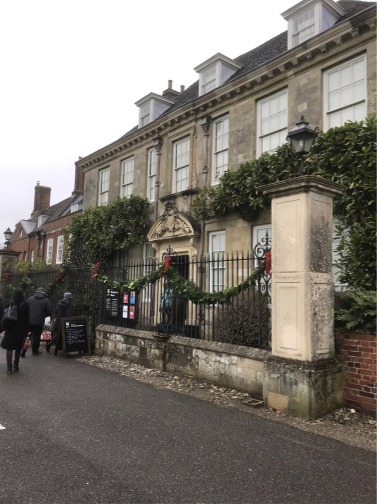 As expected, the house is classified as Grade 1 listed. Not so well known is the fact
that the ironwork at the front of the building has a separate Grade 1 listing of
its own, it comprises the overthrow, iron railings, gates and iron lamps.
As expected, the house is classified as Grade 1 listed. Not so well known is the fact
that the ironwork at the front of the building has a separate Grade 1 listing of
its own, it comprises the overthrow, iron railings, gates and iron lamps.
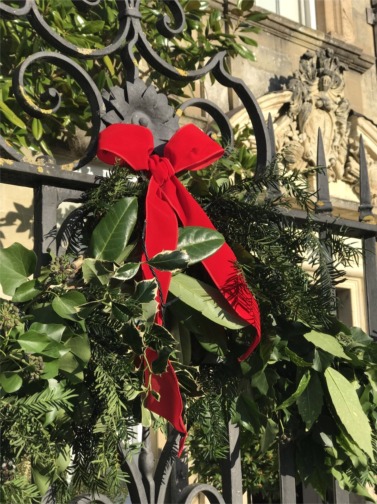
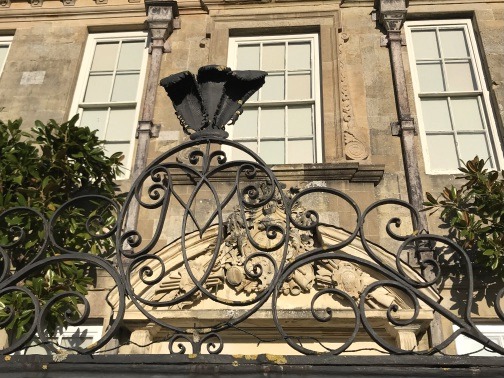
The ground floor is laid out to four principle rooms; upstairs has a similar number. This creates a pleasant cosy feel but with an air of grandness about it.
Once inside the house, you are greeted with the grandeur of the entrance hall, to the far right is an elegant wide oak staircase leading to the upper floor which is enhanced by magnificent plasterwork along the walls. Immediately ahead is a beautifully decorated Christmas Tree.
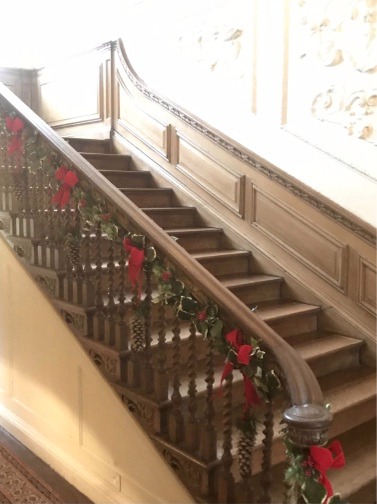
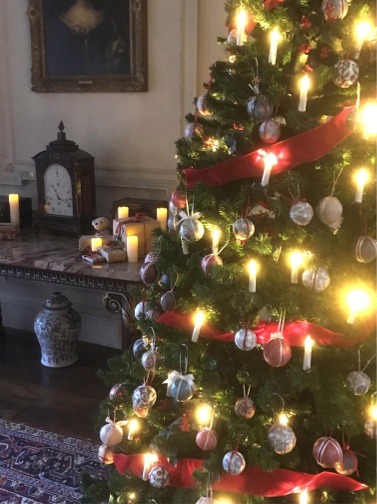
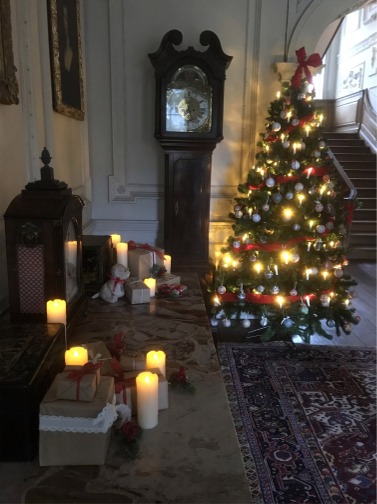
After negotiating the ticket desk and the introductory talk, you turn right and enter the Dining Room. This room is laid out in Christmas decoration recreating an 1860s-1880s style. Mrs. Beeton's Book of Household Management from 1861 was the inspiration for layout of the dining table.
The dinner started with Oyster Soup, served from a silver tureen, which was followed by either turkey, roast chicken or a slice of beef. The porcelain on the table dates from 1864 and are of the Wedgwood 'Verona' design. There are meat pies in the shape of hearts indicating the desire of the young female teenager to be married one day - this teenager was Jinny Townsend, a daughter of Mr. and Mrs. Townsend, the owners at this time. A symbol from the Townsend family crest are included in the festive decoration, for example the stag on the pie and paper stags on the Christmas tree.
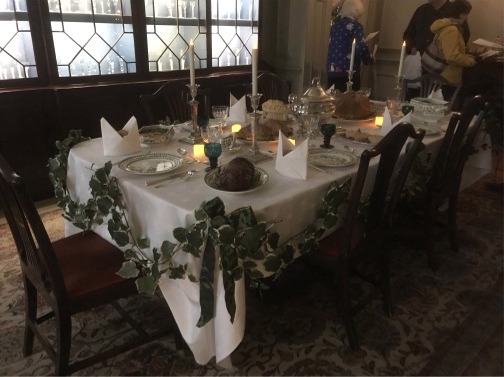
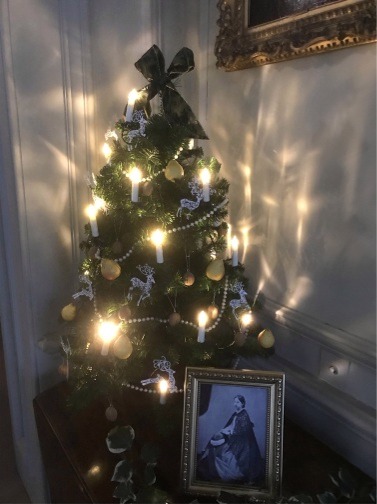
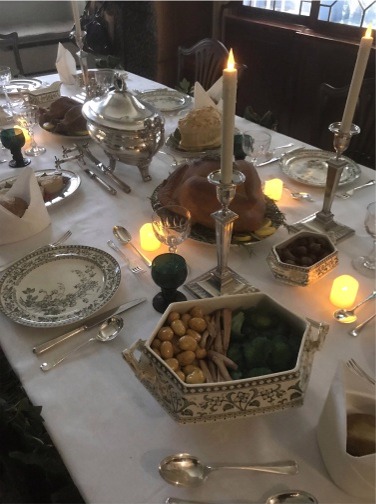
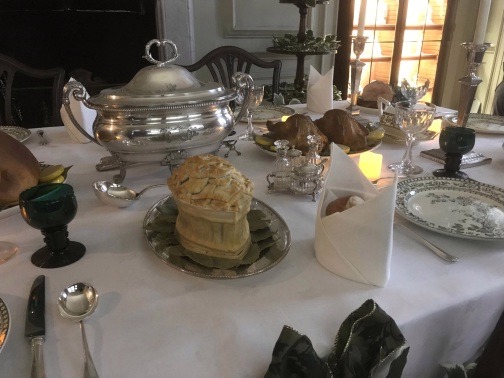
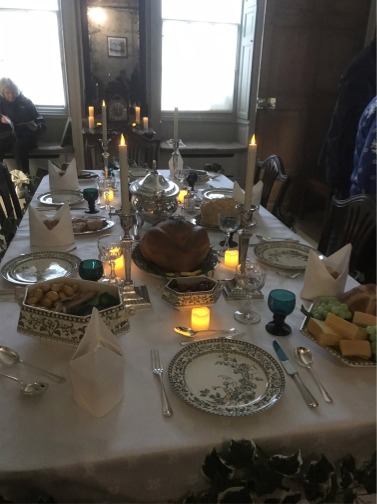
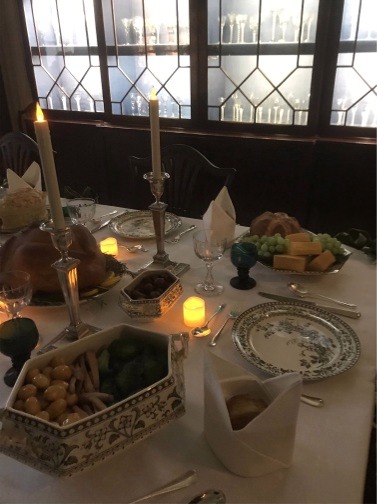 Along
one wall is a very large glass shelved display cabinet, that houses the Turnbull collection of 18th-century drinking glasses considered to
be of national importance. Spanning most of the 1700s, there are dazzling fine
examples of baluster, air twist and cotton twisted stemmed wine glasses.
Along
one wall is a very large glass shelved display cabinet, that houses the Turnbull collection of 18th-century drinking glasses considered to
be of national importance. Spanning most of the 1700s, there are dazzling fine
examples of baluster, air twist and cotton twisted stemmed wine glasses.
The sideboard supports a range of desserts. In the centre is a towering jelly that contains a lot of fruit. Also present are a savoy cake, which originated in the French Savoy region, comprising a fatless sponge, filled with whipped cream and fresh fruit, covered with a dusting of icing sugar, and a tipsy cake, which originated in the mid-18th century and comprised several small sponge cakes stacked with almonds inserted in the cracks. This was then soaked in sherry and brandy and allowed to age. As shown in the pictures below, there are a lot more desserts from which to choose...
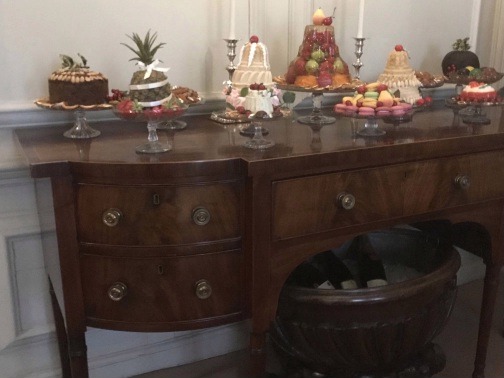
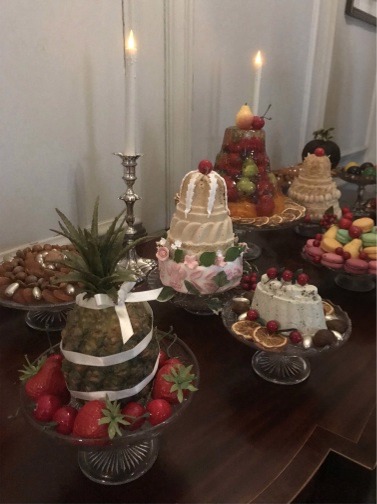
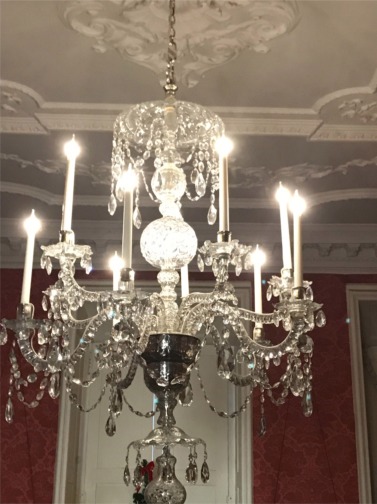
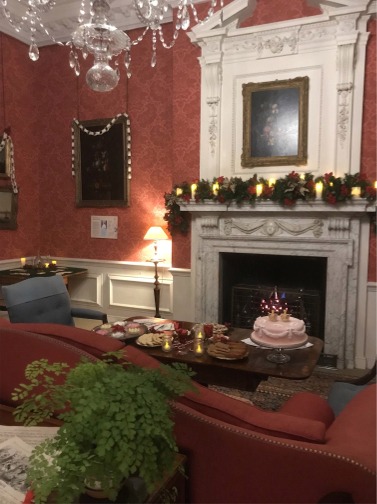 From the Dining Room, you leave the 1860s and enter the 1870s Christmas in the
Large Drawing Room. This room was used for entertaining guests as well as the
family. Entertainment would have included recitals on the piano, or solo
singing, games and theatrical production. Parlour games were common - in an age
without television or radio, families made their own entertainment.
From the Dining Room, you leave the 1860s and enter the 1870s Christmas in the
Large Drawing Room. This room was used for entertaining guests as well as the
family. Entertainment would have included recitals on the piano, or solo
singing, games and theatrical production. Parlour games were common - in an age
without television or radio, families made their own entertainment.
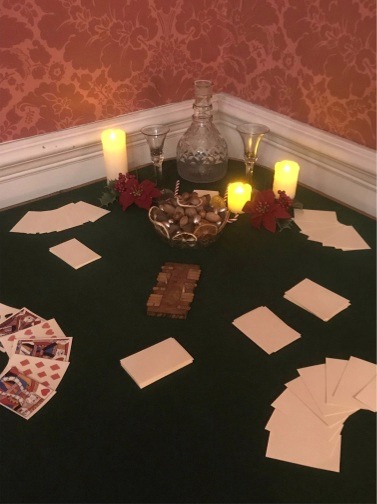
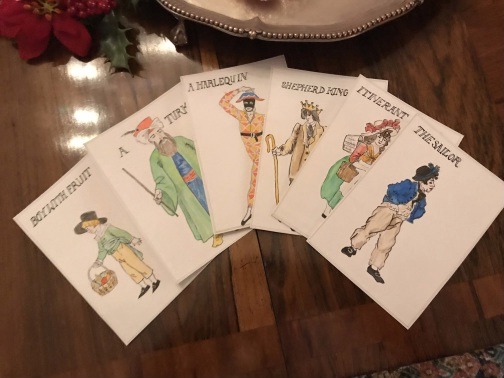
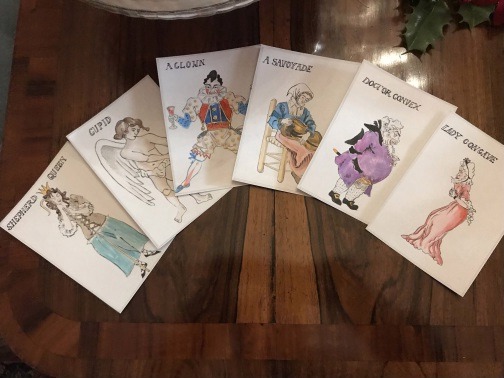
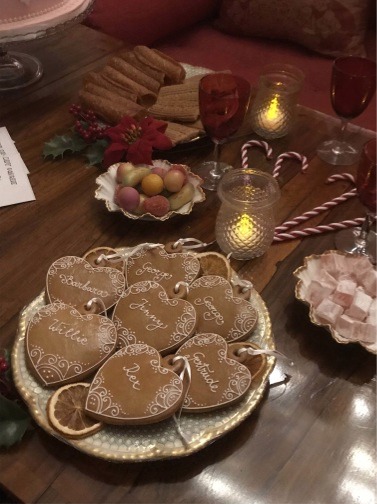 As usual the Christmas tree has lots of tasty morsels on it, candy canes,
popcorn and gingerbreads, amongst many other tasty treats. The gingerbread
hearts have been inscribed with the names of the Townsend family members.
As usual the Christmas tree has lots of tasty morsels on it, candy canes,
popcorn and gingerbreads, amongst many other tasty treats. The gingerbread
hearts have been inscribed with the names of the Townsend family members.
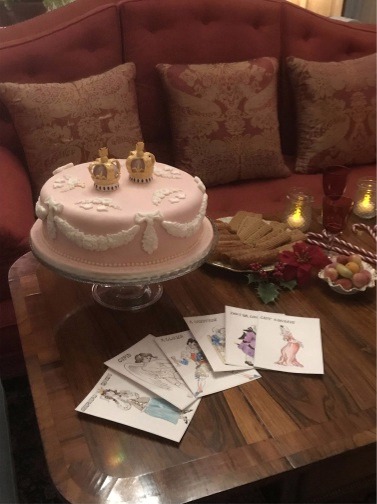 Another popular tradition was twelfth night cake - the forerunner of our modern
Christmas cake - of which there were many variations, including a pea and a bean
being baked in the cake. Whoever found the pea in their portion was crowned the
Queen for the evening and the King was crowned when the bean was found.
Another popular tradition was twelfth night cake - the forerunner of our modern
Christmas cake - of which there were many variations, including a pea and a bean
being baked in the cake. Whoever found the pea in their portion was crowned the
Queen for the evening and the King was crowned when the bean was found.
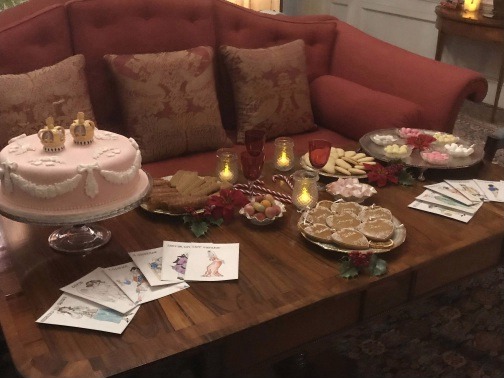
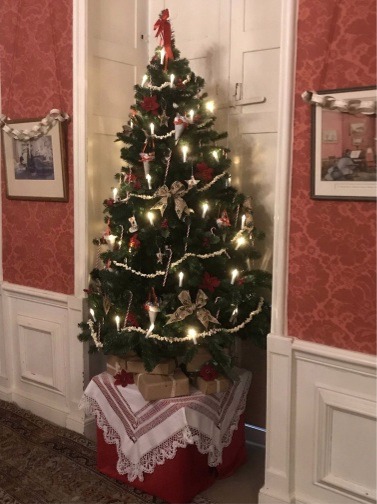
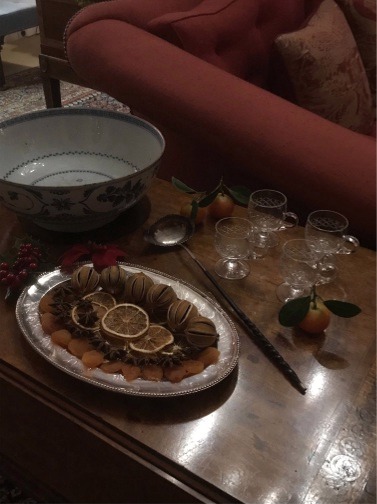
Now we move into 1881, Jinny has now been married to Willie for two years; the pair live in Mompesson House alongside Jinny's sisters. By now, Jinny and Willie had two children and this room is decorated for Christmas with children in mind.
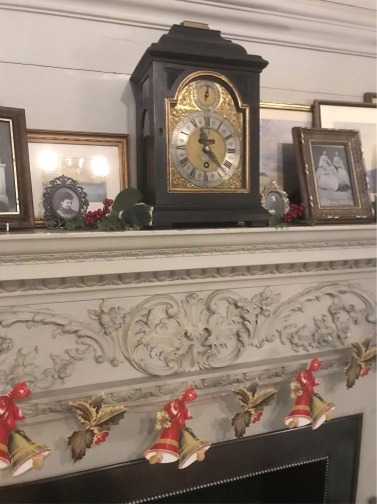
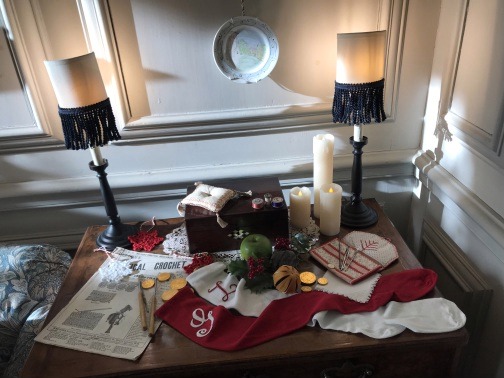
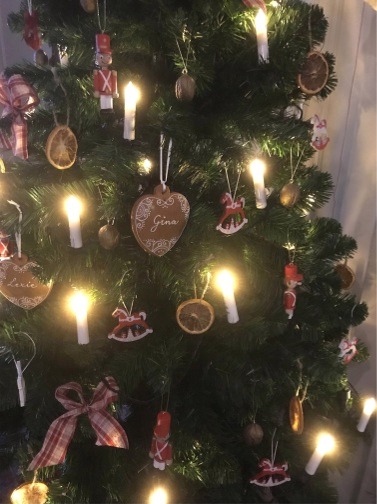 The Christmas Tree has been decorated with dried orange slice, bows, wooden
horses and soldiers. The new children's names are now included on the gingerbread
hearts on the tree. Those of us of a certain age will remember making brightly
coloured paper chains - a definite fire hazard!
The Christmas Tree has been decorated with dried orange slice, bows, wooden
horses and soldiers. The new children's names are now included on the gingerbread
hearts on the tree. Those of us of a certain age will remember making brightly
coloured paper chains - a definite fire hazard!
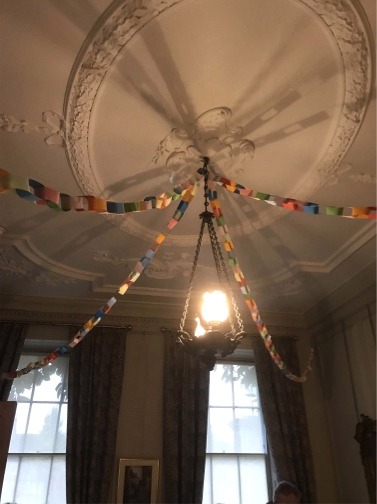
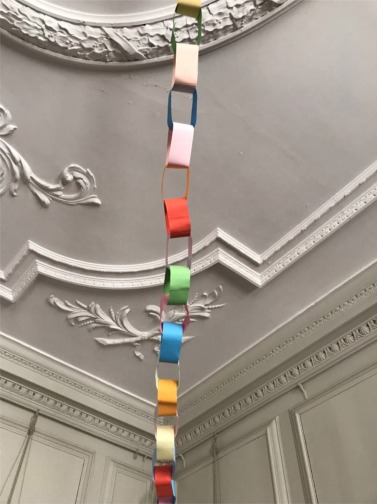
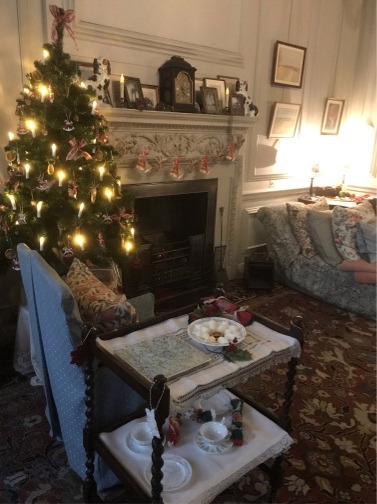
Jinny's children would have hung up their stockings for Father Christmas to fill with goodies - including an apple and orange for health and good living. Money and coal were added for prosperity and warmth.
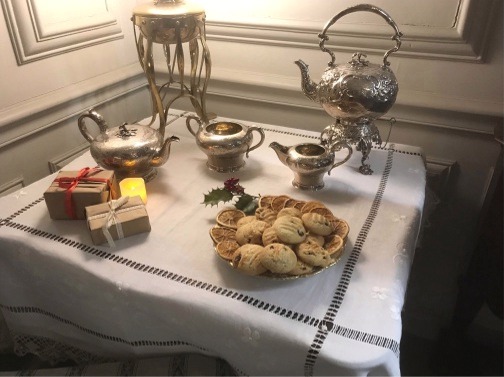 The silver tea set was a present to Jinny's father in 1857. The biscuits are tea
cookies - a bit like small fruit scones.
The silver tea set was a present to Jinny's father in 1857. The biscuits are tea
cookies - a bit like small fruit scones.
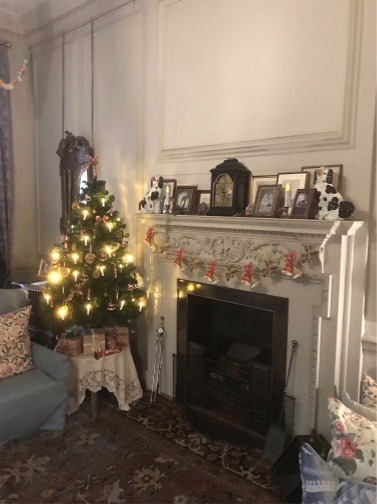 The mantelpiece contains lots of family photographs and two Staffordshire dogs -
always present and a necessary ornament to make the mantelpiece complete.
The mantelpiece contains lots of family photographs and two Staffordshire dogs -
always present and a necessary ornament to make the mantelpiece complete.
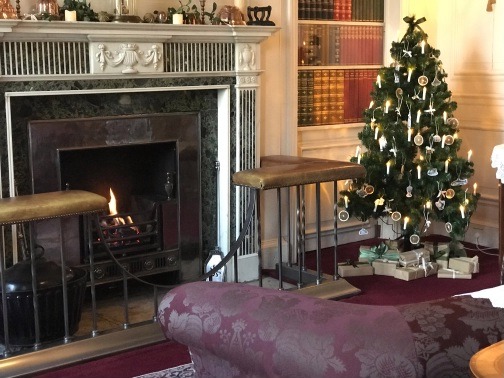 Well,
at first glance, it is pretty obvious that this room is not a pantry now. In the
1950s, the pantry was converted into the study that we see today. The pantry is
tucked away under the main staircase and included a door into the housekeeper's
room. Nowadays the door is concealed as a secret door that
contains the appearance of books on a bookcase. Look carefully, the door is
behind the Christmas Tree.
Well,
at first glance, it is pretty obvious that this room is not a pantry now. In the
1950s, the pantry was converted into the study that we see today. The pantry is
tucked away under the main staircase and included a door into the housekeeper's
room. Nowadays the door is concealed as a secret door that
contains the appearance of books on a bookcase. Look carefully, the door is
behind the Christmas Tree.
The room is decorated as a typical servants' room in Victorian times. The Housekeeper has been wrapping presents for the other servants.
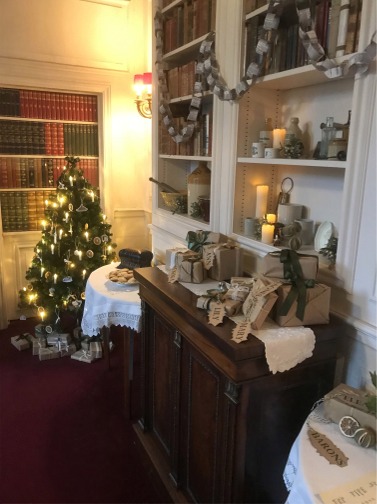
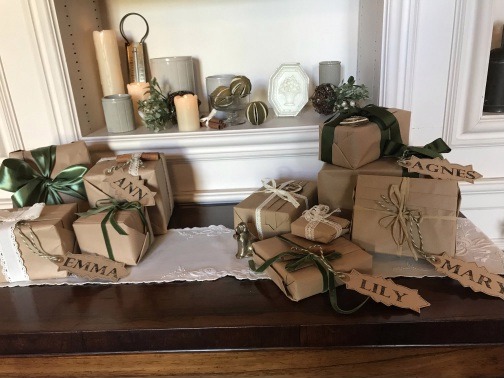
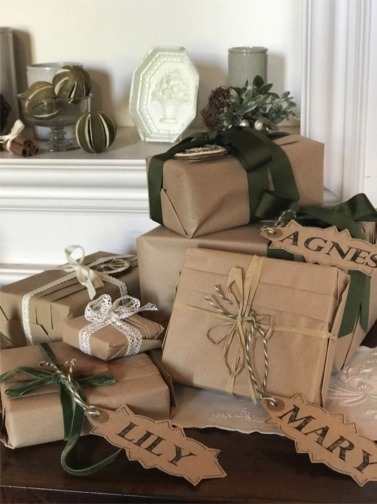
Jinny often mentions the servants in her diary - she was vary fond of the cook and was very excited when allowed to stir the Christmas pudding one year when she was a teenager.
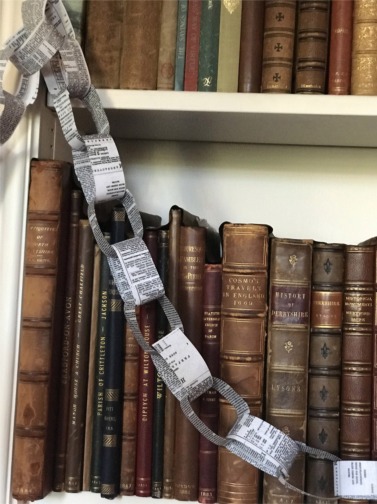 The paper chains are made out of discarded newspapers - the decorations are
simple and thoughtfully created with the basic materials they had.
The paper chains are made out of discarded newspapers - the decorations are
simple and thoughtfully created with the basic materials they had.
Also displayed in this room is a selection of Victorian cooking implements, jelly moulds, copper pans, mixing bowel, storage jars and advertising bottles.
Conservation work is carried out by the National Trust in all their properties during the Winter period. In Mompesson it is possible to see this work in action.
Every item in the collection is assessed and a condition report made to check if any deterioration is recorded. They are looking for new cracks, woodworm damage, scratched, veneer issues, moth damage, etc.
Even in Mompesson, which is relatively small, there are over 2,000 items to inspect, record and clean. Every cupboard door is opened, every drawer removed, nothing is left to chance. Once inspected, the item is then wrapped in acid-free tissue paper or a white dustsheet ready to rest until next season.
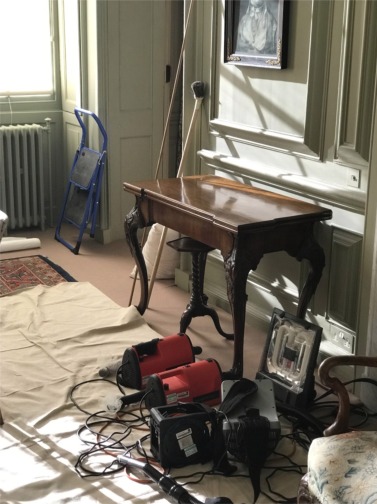
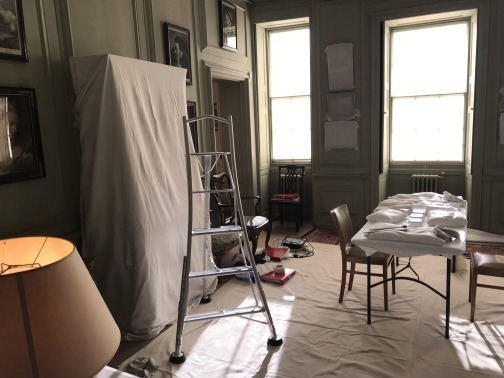
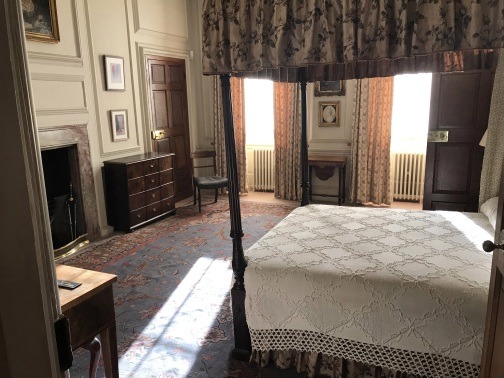
The garden is a simple one, quiet and serene in the centre of a bustling city. A lawn takes up most of the space - with a croquet set being available for the warmer months. Sitting in the garden affords an excellent view of the rear elevation of the house.
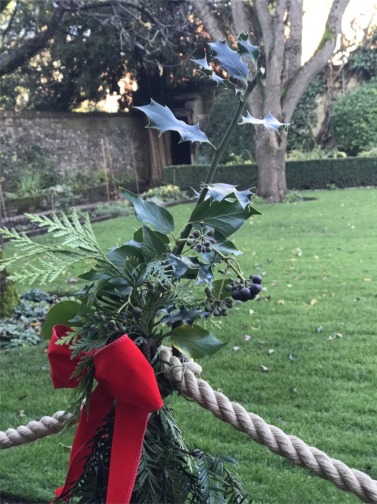
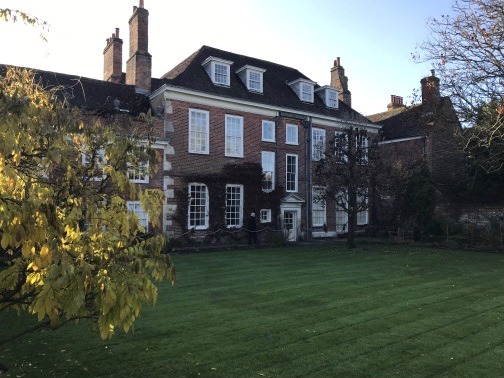
In the far corner of the garden is a small tea room - the outside seating would be far too cold on my visit. There is limited seating within the tearoom itself.
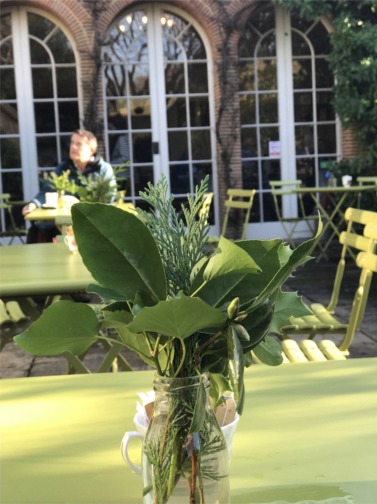
Mompesson House is a real jewel of a house, with a very warm feeling about it. A house within which every visitor could see themselves living very happily.
For more information, opening times, tickets, etc.: https://www.nationaltrust.org.uk/mompesson-house
For a map of its location, click here
To review past newsletters, just follow this link:
Past newsletters.
To subscribe to this free newsletter -
Click here